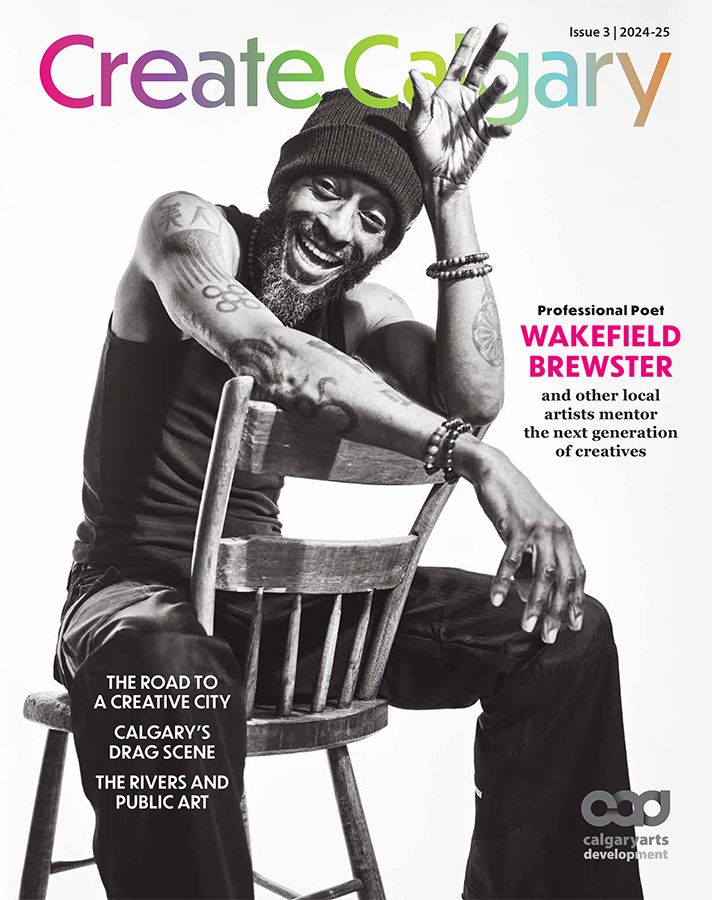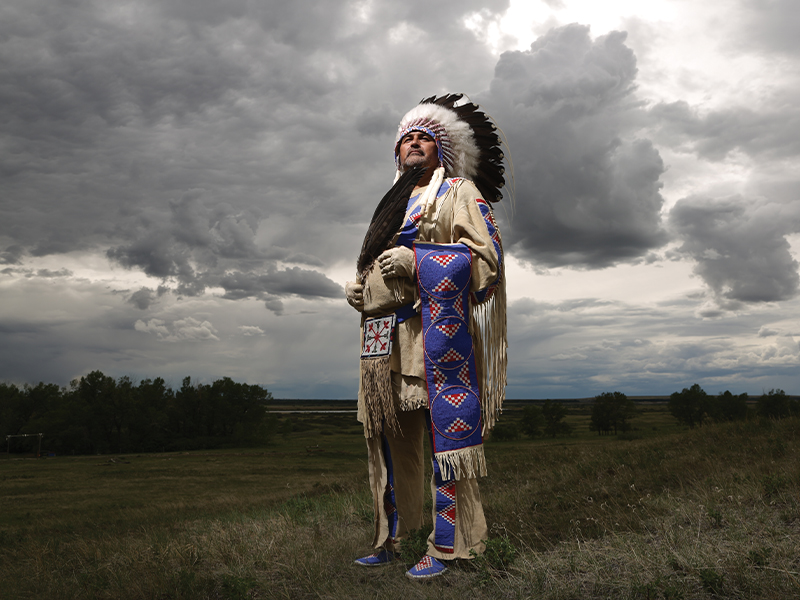Meet Adrian Stimson
Siksika Nation member, residential school survivor, multidisciplinary artist and chair of AUArts
Adrian Stimson is a member of the Siksika Nation, a residential school survivor and a multidisciplinary artist whose paintings, sculptures and installations have been exhibited across Canada and internationally. In Calgary, Stimson’s sculpture project, Kawa’pomahkaiks | Animals That Roam The Prairie, can be found along International Avenue, and his four-metre tall bronze sculpture, Iini Bison Heart, stands on the banks of Paskapoo Slopes near Canada Olympic Park. Stimson graduated from what was then called the Alberta College of Art and Design (ACAD) — now Alberta University of the Arts or AUArts — in 2003 before earning his MFA from the University of Saskatchewan in 2006.
In March 2024, AUArts appointed Stimson as the university’s new chair of the board of governors, the first Indigenous board chair in the institution’s 98-year history.
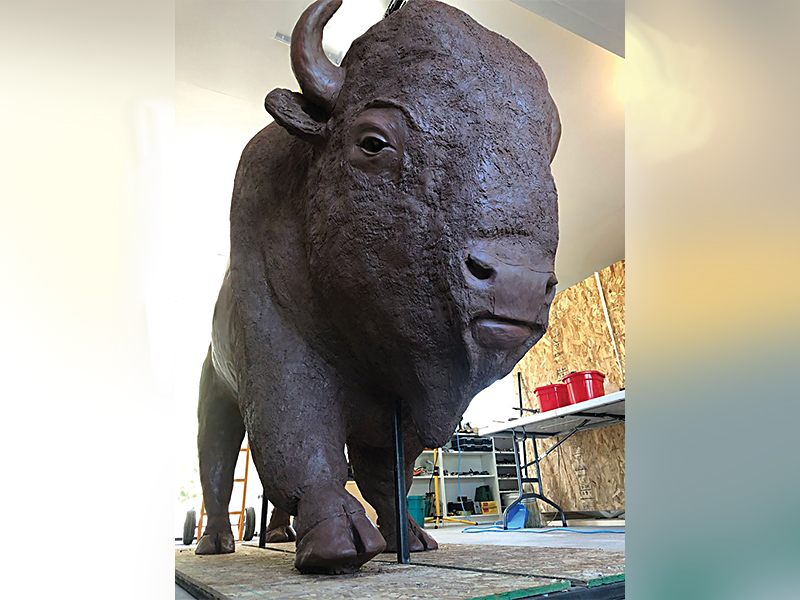
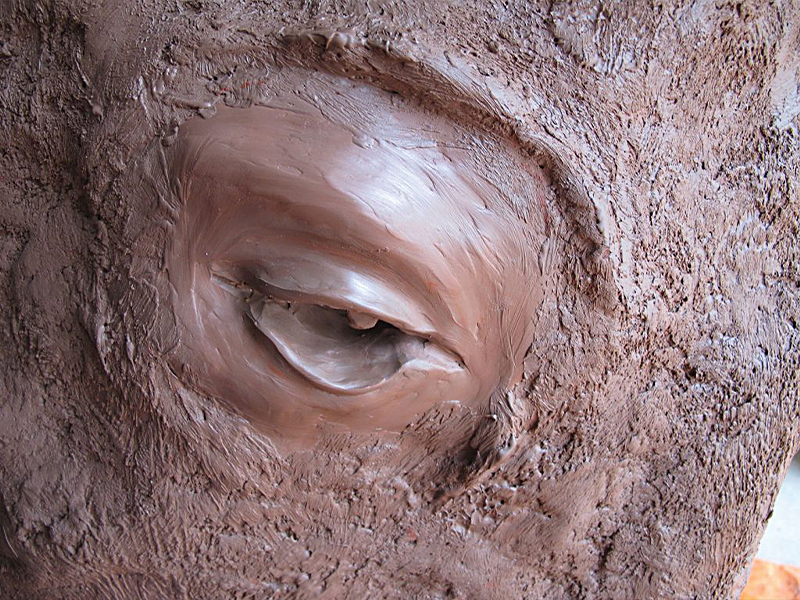
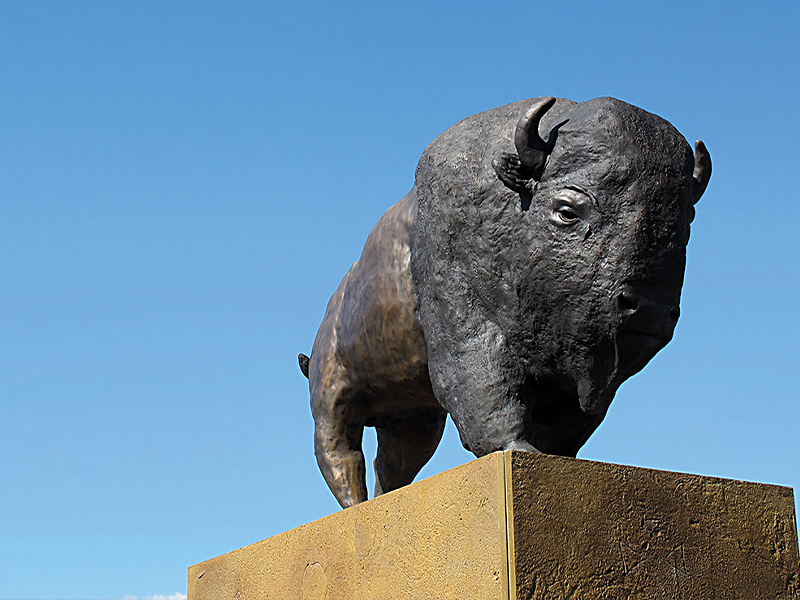
Left to right: Iini Bison Heart in studio, Iini Bison Heart close up detail, Iini Bison Heart, 2020
What kind of artist are you?
I call myself interdisciplinary. I majored in painting at ACAD back in the day. When I did my masters, I branched out into installation and performance. I would say that nowadays, as an artist, unless you’re extremely lucky, you have to be multidisciplinary. I’ve also delved into public artworks, so I have a few in Calgary, Saskatoon and soon Ottawa.
What does your new role as chair mean for you as a working artist?
In reality, the time commitment isn’t as huge as you would think. I definitely have a lot of time to work on my own practice. But the position does require a commitment of sorts. I was appointed March 20, and we jumped right into a search for a new president. Dr. Daniel Doz, who has been in that position for 13 years and did a wonderful job, is going to be moving on next year. I’m the head of the president’s search committee. We’re getting as many voices as we can within that committee to really determine the future course of the university. We’re looking to where we want to go as a university, and where we’ve been. The year 2026 is our 100th anniversary, and that’s another thing on my plate. We’re starting to get ready for that because, as you can imagine, it’s going to be a celebration. But it’s also the end of our current strategic plan. We are starting to develop a new strategic plan for the future. Like every institution, we hope that we can double our student body within the next 10 years. We have our sights on growth.
What is the advantage of having an alumnus as the board chair?
Having attended AUArts, it gives me a sort of inside perspective. That definitely helps. You know the organization to a large degree. It’s kind of funny, because at that time, as a student, you see all sorts of problematic things. And you go to administration and say, ‘How come this isn’t happening? How come that’s not happening?’ not realizing the process that you have to undergo. Now I’m in that position, and I have to deal with the needs of the students. And I think that’s a pretty interesting place to be because I can empathize and understand. Being an alumnus, I care for the university, too. I had an amazing time here. Like every student that goes through an institution, you have your good moments and bad moments. But in the end, once you graduate, there’s a real fondness for the institution. So I definitely have that strong relationship to the institution. It’s a place I care for, and I want to see it succeed.
How do you accomplish that growth? What does it take to attract artists to AUArts?
We can speak to our track record. AUArts has produced some pretty significant award-winning artists all over the place. Geoff McFetridge, for example, is now situated in Los Angeles and works with all the big producers. We really need to do a lot more promoting of ourselves: our successes, what we’ve done and what we do. A lot of our students go out into the world and end up in many other industries thanks to their arts background. Creative research often translates into other industries. A great deal of what artists do is problem solving. Artists are great problem solvers. And we’re in Alberta, so we’ve got to promote that and speak to how the arts are absolutely necessary and beneficial to the well-being of the economy here. The arts are often not viewed in the way that other economies are viewed. It takes a lot of explanation to show and prove how much artists contribute. That definitely is a challenge: bringing that forward and helping people understand not only statistically, but by example, how much money the arts bring into a community.
Do you often have to explain the creative economy? Do you find that people don’t necessarily want to believe in the economic value of art?
I think that’s a long, historical, ingrained thing that is slowly changing. Obviously, it hasn’t changed enough. I always wonder when are we [as artists] going to stop fighting to exist? When are we going to stop having to extol the virtues of art in society? Art and artists contribute not only economy-wise, but in the imaginations of our minds and hearts. We’re so integral, but, at the same time, we’re still seen as outside it all. That is obviously one of my jobs, to help shift those perceptions.
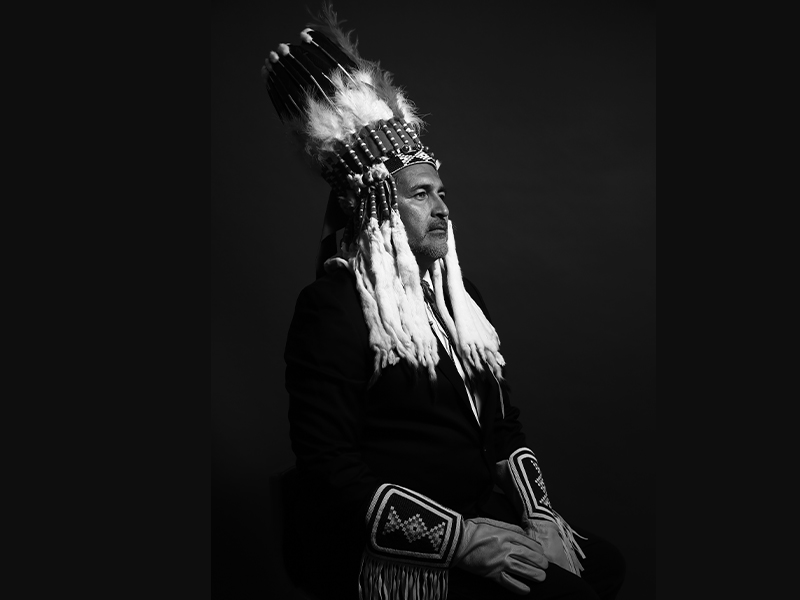
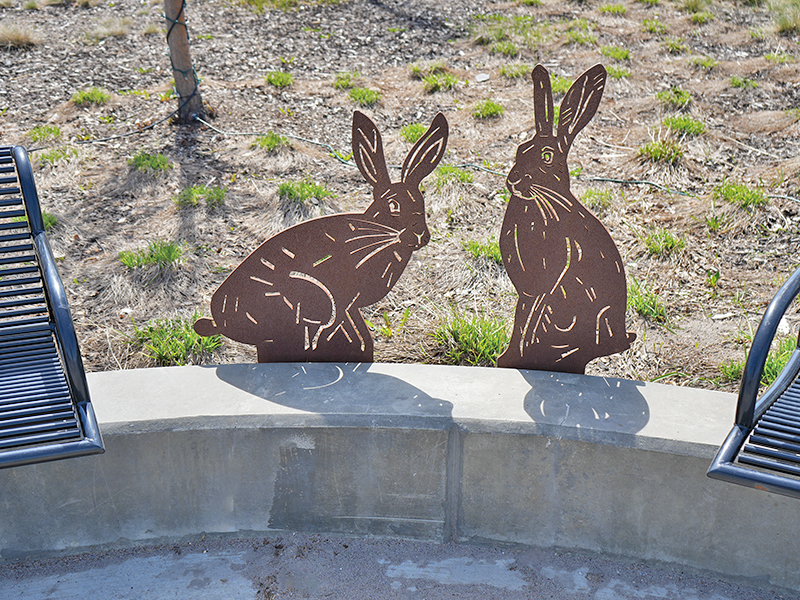
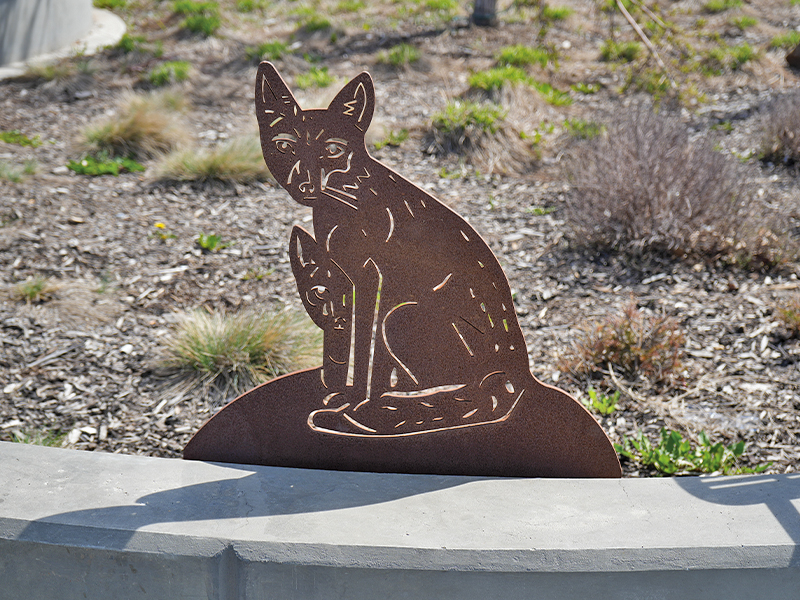
Left: Adrian Stimson, middle and right: Kawa’pomahkaiks | Animals That Roam The Prairie, 2020, Photos by Adrian Stimson
What does it mean to young Indigenous artists to have someone with your background as chair?
I hope it’s inspiring. I am the first Indigenous chair of Alberta University of the Arts. I’m very proud, honoured and humbled to be in this position. To be able to stand up on stage last spring and congratulate Indigenous graduates and shake their hands was a moment of pride. I shake all the students’ hands, of course, but there are a lot more barriers for Indigenous students. What I hope is that we lead by example. That we show young Indigenous people and artists that they can succeed.
I come from a very interesting history. I went to residential school. I hated institutions and have a right to be very cynical and critical of Canadian institutions. But I’ve been able to work through it, and I’ve been able to become a part of it. Having that background gives me empathy.
Regardless of the obstacles from childhood or through your life, if you want to be an artist and you want to move forward, you look to examples of someone who you can identify with. I hope I’m that person, not only for people of colour and Indigenous students but for all.
This article was originally published in the 2024 edition of Create Calgary, an annual magazine launched by Calgary Arts Development to celebrate the work of artists who call Mohkinsstsis/Calgary home.
You can pick up a free copy at public libraries, community recreation centres and other places where you find your favourite magazines. You can also read the digital version online here.
